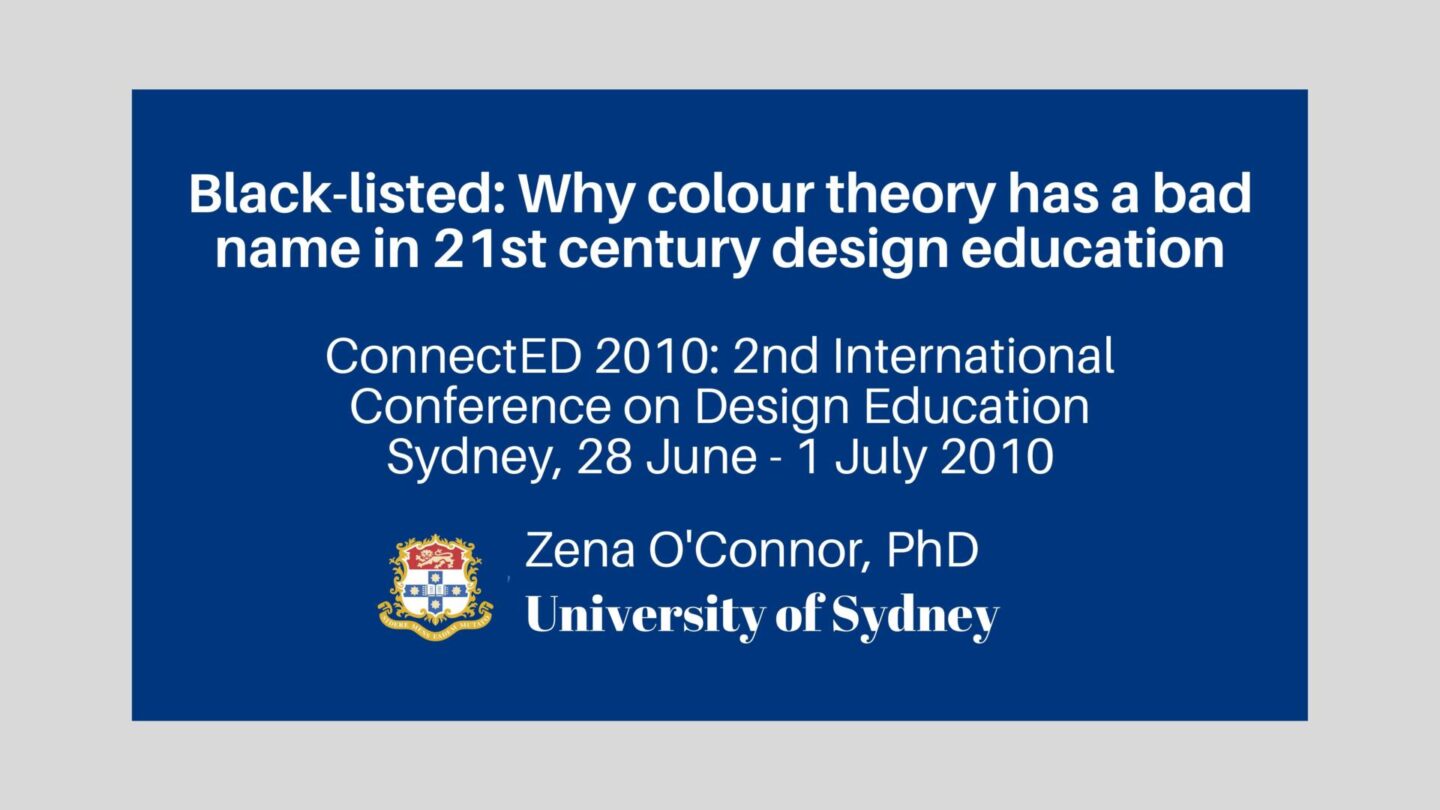
This peer-reviewed paper explored the problematic nature of colour education.
Abstract – Higher education design-focused institutions often shy away from teaching colour theory despite colour’s existence as an essential element in art, design and architecture. Anecdotal evidence suggests that colour theory has a bad name and three key reasons are suggested for the marginalization of colour theory and its subsequent no-show
in higher education curriculum.
The first relates to the diversity evident among colour theories, which are linked to the range of different domains (physics, psychology, linguistics, art and design) from which theories of colour have evolved. This diversity of origin has led to a lack of commonality among colour theories especially in terms of the embedded theoretical paradigms and ontological assumptions.
Secondly, theories of colour have not on the whole evolved, along with theory in general, to reflect current theoretical paradigms. Many oft-referenced colour theories rest on outdated theoretical paradigms and include constructs that are questionable, problematic or in need of review and revision.
Thirdly, colour theories represent a jumbled maze of explanatory, normative and predictive colour theories coupled
with colour manifestos and personal opinions masquerading as theory, plus a host of colour creation and colour
combination techniques.
This paper calls for a long-overdue overhaul of colour theory wherein it is revised to reflect the theoretical frameworks and ontological underpinnings of the 21st century. In addition, it is argued that theories attempting to describe and explain colour should be distinct from theories relating to the interface between colour and human response. These measures may bring greater clarity for those who attempt to apply colour in an art or design context plus those who teach colour theory in higher education.
The full list of papers can be accessed via this link.